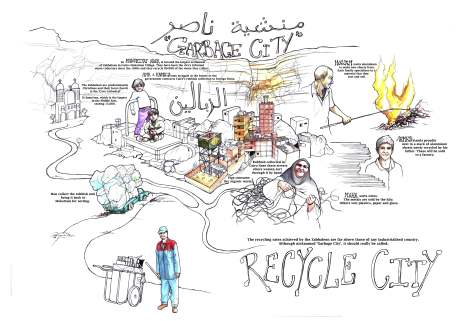Off-grid solar power is flourishing in sub-Saharan Africa – affordable products are providing electricity to millions previously without access. But this clean tech is also adding to existing rubbish dumps in the region.
E-waste – e-speak for used electrical or electronic goods – was born on 22nd March 1989 in Basel, Switzerland. The Basel Convention, which opened on that day, is a United Nations treaty that restricts the trans-boundary movement of hazardous waste through export bans. Its regulatory, government-level approach has set the tone for e-waste management ever since. Although successful in some contexts (e.g. Switzerland), this tone is less relevant to those far from neoliberal centres of power, in countries where the face of governance itself is somewhat different and electronics are sold, used, and re-used in completely different ways. Similarly irrelevant to the African setting is research dominated by economists and environmental scientists who focus on solving the e-waste problem in the ‘West’. Their saving narrative obscures the non-Western setting and income-generating opportunities that handling e-waste can provide elsewhere in the world.
Despite playing a central role in global e-waste flows, as a recipient of illegal imports and increasingly as a producer of its own, Africa is under-represented in the research. The unfortunate irony is that it is in the less influential, less regulated – less ‘developed’ – countries of Africa that one finds those closest to e-waste, those whose livelihoods depend on it and who are least equipped to process toxic batteries and circuit boards safely.
Geographies
E-waste begins its physical life in China where the majority of electronics are produced, before the majority of those goods are sold and used in the Global North. When broken or replaced by the latest model, what now constitutes e-waste finds its way, in spite of the Basel Convention, to countries of cheap labour such as Ghana or Kenya. Here the waste is processed and useful components are returned to China to be input into new processes, leaving the rest in African rubbish dumps. However, the growing solar industry in sub-Saharan Africa is bucking this trend: moving directly from manufacture in China to first hand sale in Africa, the flow of solar products bypasses Europe and North America.
This unique geography undermines the effectiveness of the Basel Convention, and similar international agreements. Their import and export rules are less effective when the waste they are trying to contain is already contained – i.e. when it has been domestically produced. This direct Sino-African link is bolstered, and the volumes of e-waste increased, by the growing consumption of mobiles, TVs and computers in the region.
Legislation
The Basel Convention and its imitators at regional and national levels target governments and manufacturers. Consumers and those earning their living from e-waste are absent from the agreements themselves and their framing. Whilst this is not surprising, the global nature of these waste flows necessitates universal involvement in its management. Efforts to adhere to the legislative agenda are split between economic incentives and changes in product design. Extended Producer Responsibility (EPR) requires manufacturers to take back used products and organise proper disposal. In Japan disposal fees put the ‘burden’ on the consumer, requiring them to pay upon disposal to fund producer take-back schemes. Elsewhere, environmental scientists have pushed the idea of Design for Environment (DfE) sometimes known as Design for Disassembly (DfD) – reflecting the primary challenge of e-waste processing: the separation of its component parts. But again, the disassemblers themselves are not present in design discussions.
The absence of reliable energy infrastructure is fuelling the growth of Africa’s off-grid solar industry. The state is similarly absent in the management of waste. This sparse state infrastructure, coupled with the prevalence of informal labour, makes sub-Saharan Africa, like much of the Global South, a unique regulatory environment – one where EPR and disposal fees might need to be rethought.
Fix it
There is insufficient research on e-waste in Africa – where much of it ends up. Responses are not consulting the recyclers there who deal with it nor are they considerate of distinct political contexts. Animations such as Annie Leonard’s Story of Electronics, CBS news features or damning reports from Greenpeace are effective ways to raise the profile of the e-waste problem. However, responding to their dramatic narratives with commercially-driven, legally-framed, and environmentally-motivated measures is not the solution.
The case of solar products highlights the problems within current e-waste management. The unique geography of Africa’s growing solar industry, the legacy of imported e-waste and the increasing internal generation of waste electronics needs a more effective and relevant response than producer-focused regulation. E-waste may yet prove a positive opportunity for sub-Saharan Africa but only if the research on it and responses to it allow.
[Originally posted on Declan Murray’s blog]
Follow Declan on Twitter: @declanrmurray
![Figure 1 - The side of a collection truck at an e-waste processing centre in Nairobi, Kenya [2014].](https://centreofafricanstudies.files.wordpress.com/2015/04/e-waste.jpg?w=500&h=375)
